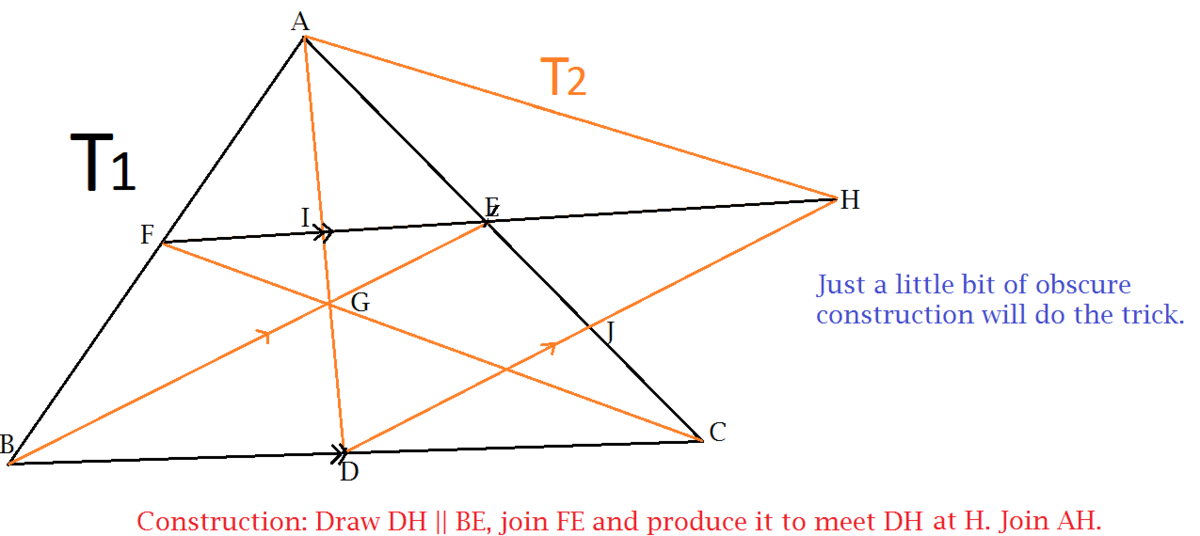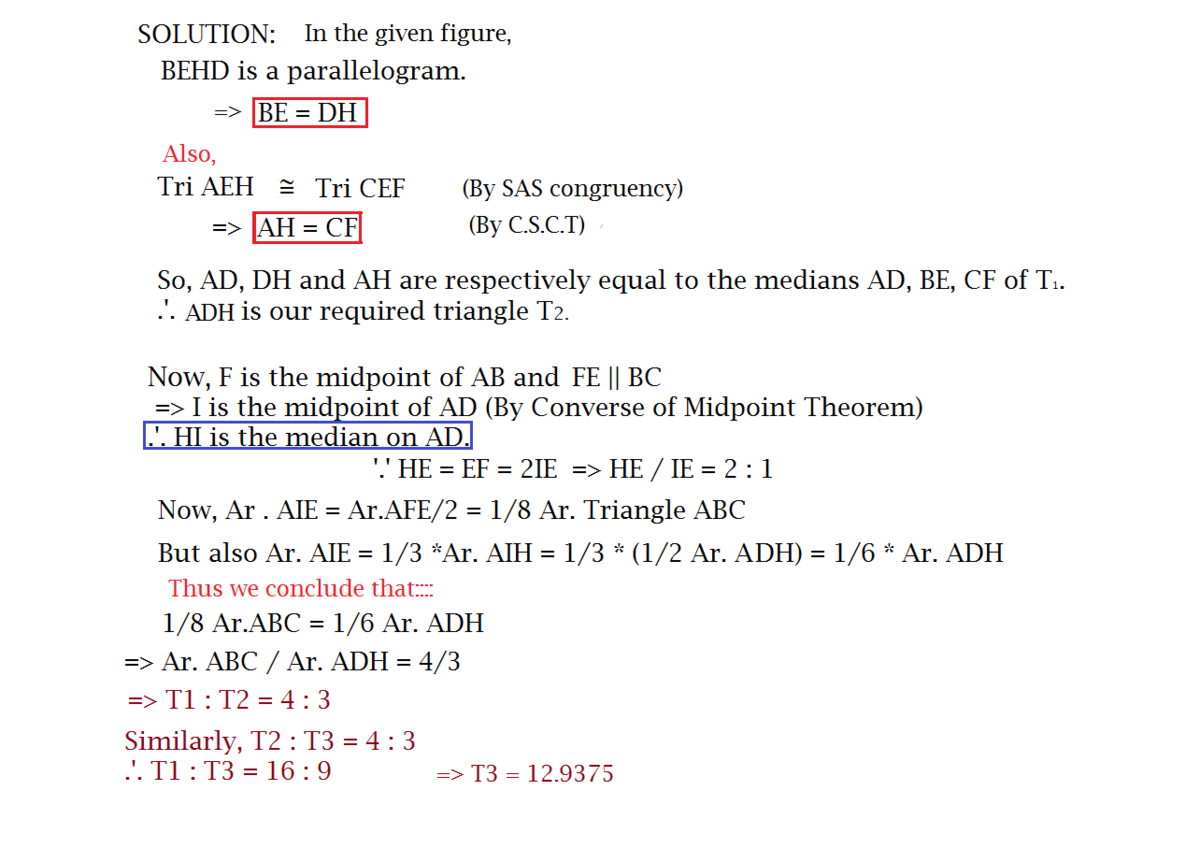Medians and Sides changed their roles
Let
be a scalene triangle whose area is
.
Let
be another triangle whose side lengths are equal to the medians of triangle
.
Similarly, let
be yet another triangle with side lengths equal to the medians of triangle
.
Find the area of triangle .
Give your answer to 3 decimal places.
The answer is 12.9375.
This section requires Javascript.
You are seeing this because something didn't load right. We suggest you, (a) try
refreshing the page, (b) enabling javascript if it is disabled on your browser and,
finally, (c)
loading the
non-javascript version of this page
. We're sorry about the hassle.


Claim: The triangle T constructed from medians has 3/4 the area of the original triangle S.
Proof using vectors. Let the original triangle S have vertices represented by the vectors a , b , c . The medians are of the form a − 2 b + c .
Consider a new triangle whose vertices are represented by 2 a − b , 2 b − c , 2 c − a . We see that the sides are vectorially equal to the median, since 2 a − b − 2 c − a = a − 2 b + c , which implies that they have the same length. Hence, this is indeed the triangle T constructed from medians.
Recall that the area of a triangle is given by 2 1 × ( a − b ) × ( b − c ) = 2 1 ( a × b + b × c + c × a ) , which is also equal to 2 1 × ( b − c ) × ( c − a ) and 2 1 × ( c − a ) × ( a − b ) , Hence, the area of the triangle T is given by 2 1 × ( 2 a − b × 2 b − c + 2 b − c × 2 c − a + 2 c − a × 2 a − b ) , which is 3/4 the area of the original triangle.